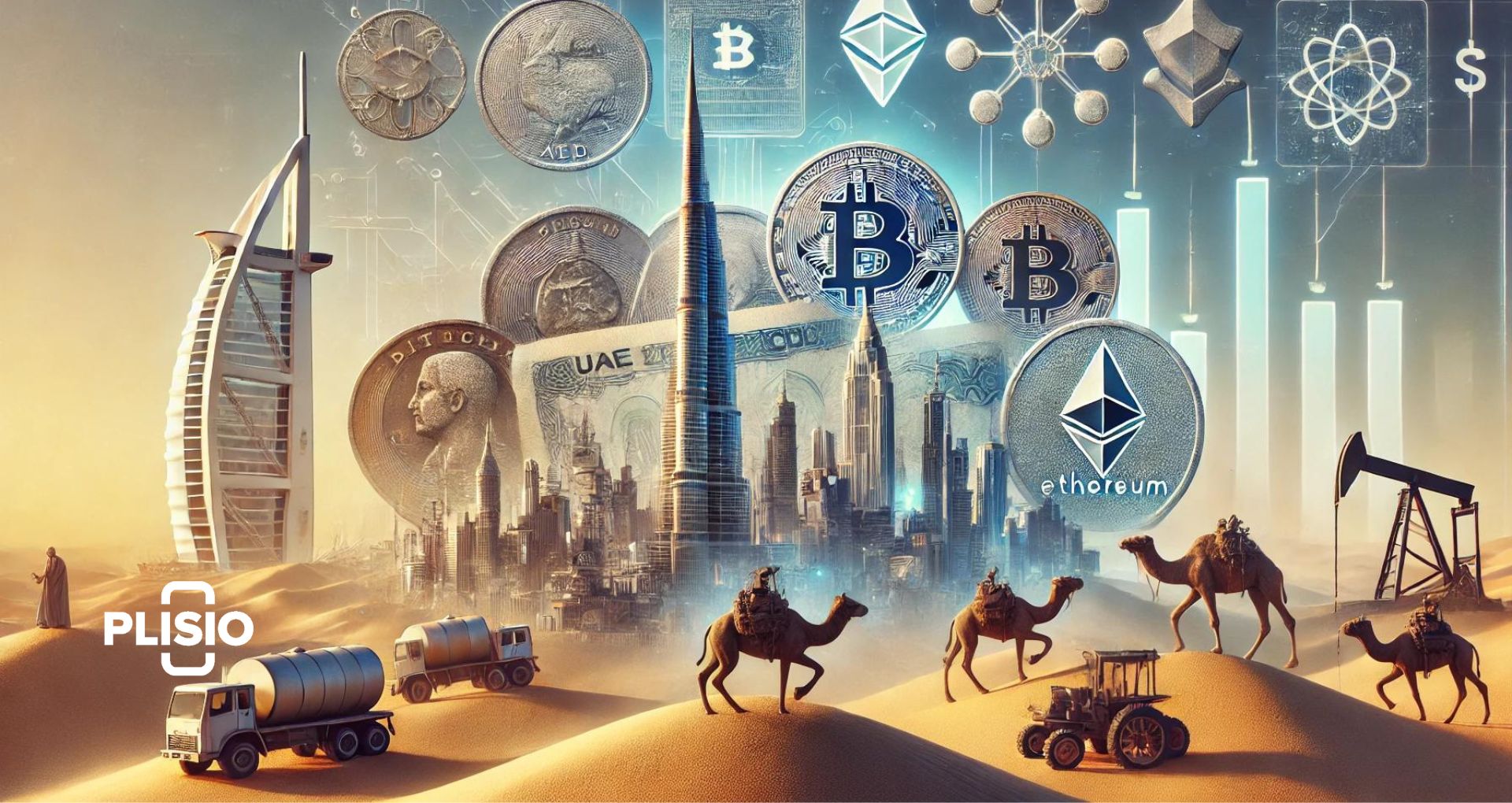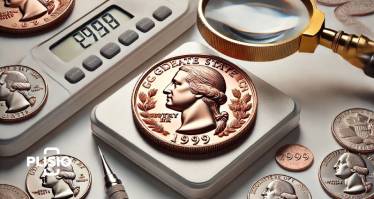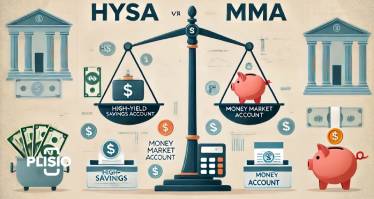Dubai Currency: The Power of the UAE Dirham

The official currency used in Dubai is the United Arab Emirates Dirham, also known as AED. Sometimes people just call it "Dubai currency."
The AED is divided into smaller units called fils. There are 100 fils in 1 AED. You can find coins in 1, 5, 10, 25, and 50 fils, as well as 1 AED. For paper money, the banknotes come in 5, 10, 20, 50, 100, 200, 500, and 1,000 AED.
This article will explore the history of Dubai's currency, including how coins and bills have changed over time. As Dubai grew from a small trading port to a major global financial hub, the UAE Dirham has remained a stable and trusted currency, supporting the country’s economic growth.
The Historical Journey of Dubai’s Currency
Dubai’s currency, the UAE Dirham (AED), has seen many changes since it was first introduced in 1973. Over the years, it has evolved into the stable currency we know today. In this section, we’ll look at how Dubai’s currency has developed, including the changes in its coins and banknotes.
Before the UAE Dirham, Dubai used the Gulf Rupee, which was issued by the Indian government. After the United Arab Emirates was formed in 1971, the Gulf Rupee was replaced by the Qatar and Dubai Riyal. This currency was used for a short time until the UAE Dirham was introduced in 1973.
History of Coins
In 1973, the UAE introduced coins in different values: 1, 5, 10, 25, and 50 fils, along with the 1 dirham coin. The smaller denominations (1, 5, and 10 fils) were made from bronze, while the larger ones (25 fils and higher) were made from a copper-nickel mix. In 1995, some coins, including the 5, 10, 50 fils, and 1 dirham, were resized, and the 50 fils coin got a unique heptagonal shape.
The coins feature Arabic text and Eastern Arabic numerals. However, the 1, 5, and 10 fils are rarely used, with most amounts rounded to the nearest 25 fils. The 1 fils coin is especially rare and often confused with the old 50 fils coin because they are similar in size.
Since 1976, the UAE has minted special commemorative coins to celebrate important events and leaders. Some popular designs include the 25 fils with a gazelle, the 50 fils with oil derricks, and the 1 dirham with a traditional coffee pot (dallah). The coins also show the year of minting in both Lunar Hijri and Gregorian calendars.
History of Banknotes
The UAE introduced its first series of banknotes on May 20, 1973, with values of 1, 5, 10, 50, and 100 dirhams. A 1,000 dirham note followed on January 3, 1976. In 1982, a new series was introduced, leaving out the 1 dirham and 1,000 dirham notes.
In 1983, the 500 dirham note was added, and in 1989, the 200 dirham note joined the series. The 1,000 dirham note came back in 2000. Today, the banknotes in circulation are in the following values: 5 (brown), 10 (green), 20 (light blue), 50 (purple), 100 (pink), 200 (green/brown), 500 (navy blue), and 1,000 (greenish blue).
The front of these banknotes has Arabic text with Eastern Arabic numerals, while the back shows English text with regular Arabic numerals. The 200 dirham note was first printed in 1989 and reissued in yellow/brown in 2008. However, this note is rare and usually comes from banks.
On March 22, 2008, a new 50 dirham note was issued with improved security features, like a color-shifting security thread. On December 7, 2021, the UAE released its first polymer banknote, a redesigned 50 dirham note to celebrate the country’s 50th anniversary.
In April 2022, the UAE introduced polymer versions of the 5 and 10 dirham notes, and a polymer 1,000 dirham note is expected in 2023.
Inflation and Buying Power of the UAE Dirham
The official currency of Dubai and the UAE is the UAE Dirham (AED), sometimes shortened to AED or DHS. The Central Bank of the UAE controls the currency, and it is tied to the US dollar at a fixed rate of 3.67 AED to 1 USD. This means the exchange rate between these two currencies stays stable.
One key factor that affects the value of a currency is inflation. Inflation is the rate at which prices for goods and services go up, which means the buying power of a currency goes down over time.
In recent years, inflation in the UAE has been low. According to Statista, the UAE had an inflation rate of 1.93% in 2019. In 2020 and 2019, there was actually deflation, meaning prices went down, with inflation rates of -2.08% and -1.93%, respectively.
A low inflation rate means the AED’s buying power stays stable, which is great for both residents and tourists, as their money holds more value. For example, if inflation is 2%, something that costs 100 AED today will cost 102 AED next year. But if inflation is 0%, the price stays the same.
Overall, the low inflation rate in the UAE helps keep the value of the Dirham steady, which benefits everyone by keeping costs predictable and affordable.
Dubai's Rising Role in the World of Cryptocurrencies
Dubai has emerged as a global hub for innovation and technology, including the fast-growing cryptocurrency market. In recent years, the city has gained the attention of the global crypto community due to its progressive regulations and openness to new technologies. In 2018, the UAE government launched the "Blockchain Strategy 2021" initiative, aiming to make Dubai one of the leading cities in the world utilizing blockchain technology.
With its favorable regulatory environment and the establishment of the Dubai Multi Commodities Centre (DMCC) Crypto Centre, the city offers a supportive ecosystem for blockchain and crypto businesses. This has attracted a growing number of startups, investors, and blockchain enthusiasts, positioning Dubai as a key player in the future of digital currencies and blockchain innovation.
United Arab Emirates Dirham (AED)
If you're visiting Dubai or any other city in the UAE, you'll need to get familiar with their currency, the UAE Dirham (AED). The Dirham is often shortened to "AED" or "د.إ" and is commonly called the Emirati Dirham.
The Dirham was introduced in 1973 to replace the Qatar and Dubai Riyal. Its value is stable because it’s tied to the US Dollar, which is used for most international transactions. The latest banknotes, released between 2021 and 2023, come with new designs:
- 5 Dirhams (brown): Features Ajman Fort on the front and Dhayah Fort in Ras al Khaimah on the back.
- 10 Dirhams (green): Shows the Sheikh Zayed Grand Mosque on the front and Khor Fakkan Amphitheatre on the back.
- 50 Dirhams (navy blue): Depicts Sheikh Zayed and the other founding fathers on the front, and Sheikh Zayed signing the union document on the back.
- 100 Dirhams: Features Al Fahidi Fort on the front and a falcon with the Dubai World Trade Centre on the back.
- 200 Dirhams: Shows the Sharia Court and Zayed Sports City on the front, and a falcon with the Central Bank on the back.
- 500 Dirhams (light blue): Depicts the Terra Sustainability Pavilion from Expo Dubai, the Museum of the Future, Emirates Towers, and Burj Khalifa.
- 1,000 Dirhams (brown): Features the Sheikh Zayed “Hope” probe and the Barakah nuclear power plant in Ruwais.
Currency Usage in Dubai
The official currency in Dubai is the UAE Dirham (AED), which has been in use since 1973. One dirham is divided into 100 fils. Dirham notes come in denominations of 5 (brown), 10 (green), 20 (blue/green), 50 (purple), 100 (red), 200 (brown), 500 (navy blue), and 1,000 (green/blue) dirhams. Coins are available in 1, 25, and 50 fils.
Is USD Accepted in Dubai?
Although the official currency is the dirham, US dollars (USD) are widely accepted, especially in tourist areas and major shopping centers. However, it’s a good idea to carry dirhams for smaller purchases and to avoid exchange rate differences.
When exchanging USD for dirhams, remember that exchange rates can vary depending on where you go. It’s best to exchange currency at authorized centers like banks and exchange offices to avoid scams and get better rates.
Most hotels and restaurants in Dubai accept major credit cards such as Visa, Mastercard, and American Express. It’s a good idea to check with the business beforehand to avoid any issues.
Exchanging Currency in Dubai
If you’re traveling to Dubai, you’ll need to exchange your currency for dirhams. You can exchange money at exchange bureaus, banks, international airports, and hotels. To get the best rate, compare prices at different locations.
While credit cards are widely accepted in Dubai, it’s always helpful to have some cash, especially for smaller shops that may not take cards.
The UAE Dirham is a stable currency, and knowing how to exchange money and where to use it will make your trip easier and more enjoyable.
Where to Exchange Currency in Dubai
There are several places to exchange currency in Dubai, but some offer better rates than others. The best places are banks and exchange bureaus. Banks usually have better rates, but they might charge a fee or commission. Exchange bureaus may not charge a fee, but their rates might not be as good.
You can also exchange currency at the airport, but rates there are typically worse than at banks or exchange bureaus. It’s a good idea to shop around to find the best rate, as some places might offer better deals than others.
What to Know Before Exchanging Currency
Before you exchange money in Dubai, keep a few things in mind:
- Check the current exchange rate to compare it with the rate offered.
- Look out for any fees or commissions charged for the exchange.
- Bring valid ID (like a passport or ID card).
- Stay cautious of scams or frauds common in currency exchanges.
By doing a little research and comparing options, you can get a good exchange rate and avoid extra fees.
Choosing Between USD and AED
If you're heading to Dubai, you might wonder whether to carry US dollars (USD) or the local currency, the UAE Dirham (AED). Here's a quick look at the pros and cons of each:
- Exchange Rate: The rate between your home currency and AED can impact your budget. Check the current rate before your trip to see how much your money is worth in Dubai.
- Convenience: The most convenient currency to carry in Dubai is the AED. It’s accepted everywhere, and while ATMs and exchange services are available, having AED on hand makes things easier.
- Fees: Be aware of any fees when exchanging currency. Some services charge a flat fee or percentage, and some credit cards may also have foreign transaction fees. Check with your bank before using your card in Dubai to avoid surprises.
Tips for Exchanging Currency
- Compare rates and fees before exchanging.
- Avoid airport exchanges, as they tend to have higher rates.
- Carry small bills for taxis and small purchases.
- Use credit cards at hotels and restaurants to avoid carrying large amounts of cash.
- Keep your money secure in a hotel safe, and be cautious in public.
By considering convenience, fees, and security, you can make the most of your money while enjoying your trip to Dubai.
Cost of Living in Dubai
If you’re planning to visit or move to Dubai, it’s important to understand the cost of living. While Dubai is known for its luxury lifestyle, you can still enjoy the city without spending too much, as long as you plan ahead.
Housing is the biggest expense. Rent varies depending on location and type of accommodation. A one-bedroom apartment in the city center costs around AED 7,583 per month, while one in the suburbs is around AED 2,833. To save money, you might consider sharing an apartment or living in a more affordable area.
Food costs depend on where and what you eat. A meal at a mid-range restaurant is around AED 60, while fast food is about AED 25. Cooking at home or eating at local restaurants can help save money.
Transportation is affordable. A one-way metro ticket costs about AED 7, and taxis are AED 10 per kilometer. Frequent public transport users should consider getting a Nol card for discounted fares.
Other expenses like entertainment, clothing, and utilities depend on your lifestyle. Free activities, like visiting parks or attending cultural events, are great for budget-conscious visitors.
In general, while Dubai can be expensive, good budgeting and planning can help you enjoy the city without overspending.
Don’t Get Scammed: Tips for Exchanging Currency in Dubai
Dubai is a popular tourist destination, which also means there can be scams related to currency exchange. Here are some tips to avoid getting scammed:
- Use a Reputable Exchange House
Always choose an exchange house licensed by the Central Bank of the UAE. These places are regulated, and you can check the exchange rate on the Central Bank’s website to ensure a fair deal. - Avoid Street Exchanges
Exchanging currency on the street is illegal in Dubai and often linked to scams. Stick to licensed exchange houses or banks. - Check the Exchange Rate
Rates can vary between exchange houses, so shop around. You can also use online currency converters to check current rates. - Count Your Money
Always count your money before leaving the exchange house or bank. Make sure the amount is correct and the notes are genuine. If unsure, ask them to count it in front of you. - Watch Out for Scammers
Be cautious if someone on the street offers to exchange currency. These scams often involve tricks to take your money. Politely decline and walk away.
By following these tips, you can safely exchange currency and avoid scams in Dubai. Always stick to licensed exchange houses, check the rates, and be cautious of strangers offering deals.



